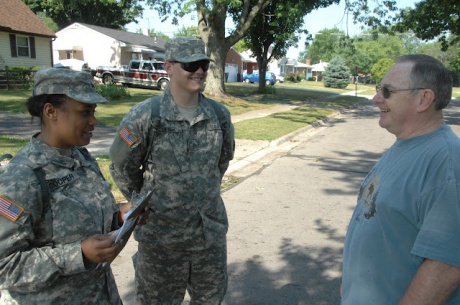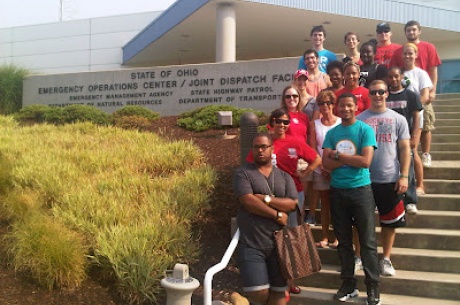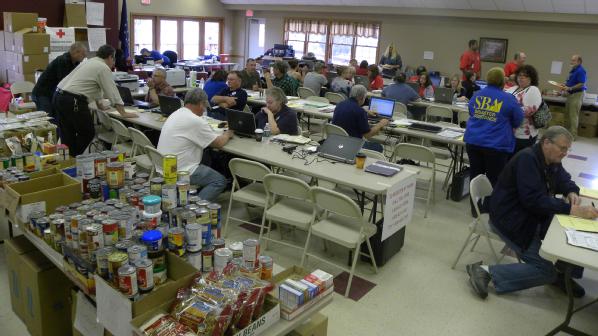FEMA Mitigation Assessment Team Report on Spring 2011 Tornadoes
A little over a year ago, hundreds of tornadoes touched down in the Southeastern and Midwestern portions of the United States between April 25 and April 28, 2011. On May 22, only a few weeks later, a powerful 0.75-mile-wide tornado cut a 6-mile path through Joplin, MO. These tornado events resulted in the tragic loss of life, destruction of thousands of homes and billions of dollars in building and infrastructure damage. FEMA’s Building Science Branch responded by deploying a Mitigation Assessment Team of specialists to assess building damage across a five-state area comprised of Alabama, Georgia, Mississippi, Tennessee, and Missouri.
Because every individual loss is a community loss, our primary goal was to assist recovery efforts by distributing timely and applicable guidance for recovery and reconstruction. We assessed the performance of the buildings and various infrastructure affected by the tornadoes, document selected safe room and storm shelter performance in the affected areas, and describe the lessons learned that could reduce future loss of life and damage to buildings and infrastructure from tornado events. A report with the results of our observations, conclusions and strategic actionable recommendations to help reduce future building damage and loss of life from tornadoes was recently published.
In the first months following the tornadoes, the MAT published eight Recovery Advisories, participated in the Safer Alabama Summit in June 2011, and held numerous public training sessions in affected areas in the summer of 2011 and spring of 2012. The report with the details of the MAT field observations, conclusions, and recommendations is now published and available to be downloaded as FEMA P-908, Mitigation Assessment Team Report – Spring 2011 Tornadoes: April 25-28 and May 22; Building Performance Observations, Recommendations, and Technical Guidance (May 2012). FEMA P-908 was released to the public on May 22, 2012, the one-year anniversary of the tornado event in Joplin.
The report was developed and reviewed by a team of over 200 design and construction experts from various industry groups, academic institutions, nonprofit associations, government agencies, and small and large businesses. FEMA P-908 presents the MAT’s observations, 47 conclusions, and 49 actionable recommendations directed at strategically improving public safety and building performance during tornado events through defining research needs, proposing national code and standard changes, and providing local governments, individuals, design professionals, building owners and key federal agencies with actions they can take. FEMA P-908 also describes in detail the historic storms and building codes in the affected areas and includes an appendix with prescriptive guidance for enhanced construction techniques to improve the performance of wood-frame residential structures when impacted by tornadoes rated EF2 or less.
The MAT’s recommendations addressed a range of building and life-safety issues. Several of the recommendations are already being implemented:
- FEMA submitted a proposal in January 2012 to the International Code Council for the 2015 update of the International Building Code to require that a safe room or storm shelter be included when new schools and critical facilities meeting certain criteria are built; this proposal passed in the April 2012 committee hearings.
- A change to the risk category and addition of extensive commentary on tornado loads is being planned for submission to the American Society of Civil Engineer’s Minimum Design Loads for Buildings and Other Structures (ASCE 7).
- This publication combined with FEMA's technical guidance for the construction of Individual and Community Safe Rooms, provides individual residents, community planners and emergency managers with the information necessary to get started on projects and plans that will better prepare them for next year.
- FEMA is planning additional outreach activities to highlight the MAT’s observations, conclusions, recommendations, and reporting efforts.
What MAT means for the future
The MAT serves several purposes for future disasters and future mitigation activities. Future disasters with similar impacts will have the published MAT Reports and Recovery Advisories available to them immediately as an expert source of how buildings fail or resist extreme winds. As soon as the recovery starts, organizations involved in the recovery could use this existing pool of standards, best practices, and guidance to build back safer, stronger and more resilient.
The MATs work also helps FEMA continually validate the design and construction guidance it produces for the public, the success of FEMA funded Mitigation projects and the documentation needed to strengthen and update the voluntary, private sector, consensus building codes and standards in this county that the public relies on.
Visit www.fema.gov/rebuild/buildingscience for more information on the FEMA Building Science Branch.






